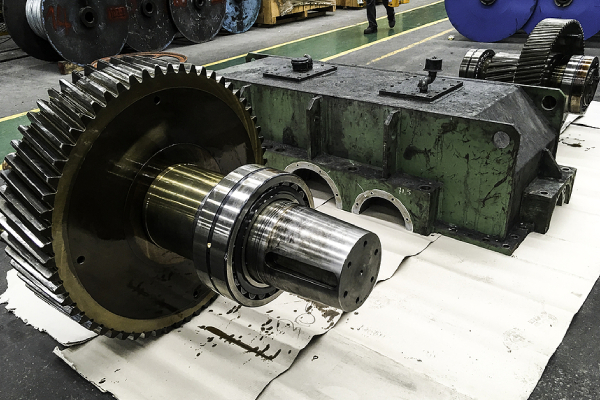Single-phase induction motors are indispensable in many industrial and residential applications today, powering various equipment ranging from compact compressors to large conveyor systems and water pumps. Their widespread use stems from their simplicity, cost-effectiveness, and adaptability in environments where three-phase power is impractical or unavailable.
However, like all electromechanical systems, these motors require diligent maintenance and systematic troubleshooting to sustain efficiency, prevent unexpected downtime, and extend operational lifespans. Proactive diagnostics not only mitigate energy waste but also enable early detection of faults, reducing repair costs and safeguarding against catastrophic failures. Below, we explore common motor issues, structured troubleshooting methodologies, and best practices for ensuring reliable performance.
Identifying Common Issues in Single-Phase Induction Motors
Effective troubleshooting begins with recognising symptoms linked to specific failures. Single-phase motors exhibit distinct operational anomalies, each pointing to underlying electrical, mechanical, or environmental causes:
1. Failure to Start
A motor that fails to initiate rotation often signals electrical faults such as open windings, defective capacitors, or compromised centrifugal switches. Mechanical obstructions, including seized bearings or misaligned shafts, can also immobilise the rotor. Additionally, component degradation—such as worn contacts in the starting circuit—may disrupt the initial torque generation required for rotation.
2. Unusual Humming Noises
Strange motor noises like persistent humming without rotation typically indicate issues with the starting capacitor or centrifugal switch. The capacitor provides the phase shift necessary to generate starting torque; a degraded or failed capacitor leaves the motor “stalled,” vibrating in place. Over time, capacitors may lose capacitance due to dielectric breakdown, necessitating regular inspection. Notably, substituting capacitors with higher-than-rated values risks excessive current draw, overheating windings, and irreversible insulation damage.
3. Overheating
Elevated operating temperatures often stem from overload conditions, poor ventilation, or voltage imbalances. Continuous overloading forces windings to draw excess current, accelerating insulation breakdown. Environmental factors like dust accumulation or obstructed airflow exacerbate heat retention, shortening the motor’s lifespan. In severe cases, prolonged overheating may necessitate HV motor rewind to replace charred windings and restore functionality.
4. Unbalanced Voltage and Vibration
Voltage imbalances—caused by unstable power supplies or uneven load distribution—create asymmetric magnetic fields, leading to irregular rotation, excessive vibration, and premature bearing wear. These vibrations often manifest as audible squealing or grinding, mimicking symptoms of mechanical faults. Technicians must differentiate between electrical and mechanical causes by testing voltage stability and inspecting bearings for play or roughness.
5. Intermittent Operation
Random on-off cycling or sporadic performance often points to loose connections, faulty thermal protectors, or compromised wiring. Thermal overload devices may trip prematurely due to inadequate cooling or incorrect calibration, requiring recalibration or environmental adjustments.
Understanding these symptoms streamlines the diagnostic process, enabling technicians to isolate faults efficiently.
Systematic Troubleshooting Methodology
A structured approach to troubleshooting minimises risks and ensures thorough fault detection. The process involves safety protocols, visual inspections, and systematic electrical/mechanical testing.
1. Prioritising Safety Protocols
Before performing any hands-on examination, the motor must be safely powered down. Start by locating and switching off the motor’s main supply or circuit breaker. Use a multimeter to verify that no voltage is present. For added precaution, follow lockout/tagout (LOTO) procedures to prevent accidental energisation.
Once the system is confirmed to be de-energised, any residual energy in the motor’s capacitors or inductive components must be discharged. This step is crucial, as stored energy in capacitors can deliver painful shocks or burns. A safe way to discharge capacitors is by using a 10 kΩ resistor rated appropriately for the capacitor’s voltage. Attach the resistor across the terminals for a few seconds using insulated alligator clips. Alternatively, a lightbulb can be used as a simple resistor substitute to draw off stored charge.
2. Conducting Visual Inspections
After confirming a safe environment, proceed with a visual inspection of the motor and its surroundings:
- Housing and Mounting: Inspect for cracks, dents, or corrosion that could misalign the rotor or stator.
- Wiring and Terminals: Check for frayed insulation, loose connections, or oxidation at terminals, which increase resistance and heat generation.
- Capacitors: Look for bulging, leaks, or burnt marks—clear indicators of capacitor failure.
- Environmental Conditions: Ensure the motor operates in a clean, dry environment free from debris. Poor ventilation accelerates overheating, while moisture ingress risks insulation failure.
For facilities integrating backup power systems, aligning motor maintenance schedules with generator overhauling ensures stable voltage supply, reducing the likelihood of voltage-related motor faults.
3. Electrical and Mechanical Testing
With the visual inspection complete, the next step is to perform electrical tests. These include:
- Capacitor Evaluation: Use a multimeter set to capacitance mode to verify values against manufacturer ratings (±10% tolerance). Replace units with significant deviations.
- Winding Analysis: Measure resistance across start and run windings using an ohmmeter. Infinite resistance suggests open windings, while abnormally low readings indicate short circuits.
- Continuity Checks: Test for unintended continuity between windings and the motor frame, which signals insulation failure.
- Bearing Assessment: Manually rotate the shaft to detect roughness or excessive play. Worn bearings generate friction, increasing load and energy consumption.
- Centrifugal Switch Inspection: Verify the switch’s contacts open/close correctly at specified speeds. Stuck switches prevent the motor from transitioning from start to run mode.
After repairs, conduct a no-load test to evaluate performance before reinstalling the motor under load.
Conclusion
Troubleshooting single-phase induction motors demands a well-informed, structured approach that balances safety, inspection, and testing. By recognising early signs of failure, technicians can take proactive steps to prevent escalation and avoid unplanned downtime. Following a thorough diagnostic procedure, including electrical and mechanical evaluations, enhances operational efficiency and extends the service life of these essential machines. With proper care and prompt attention to faults, single-phase motors will continue to provide reliable performance in countless industrial and commercial settings.

